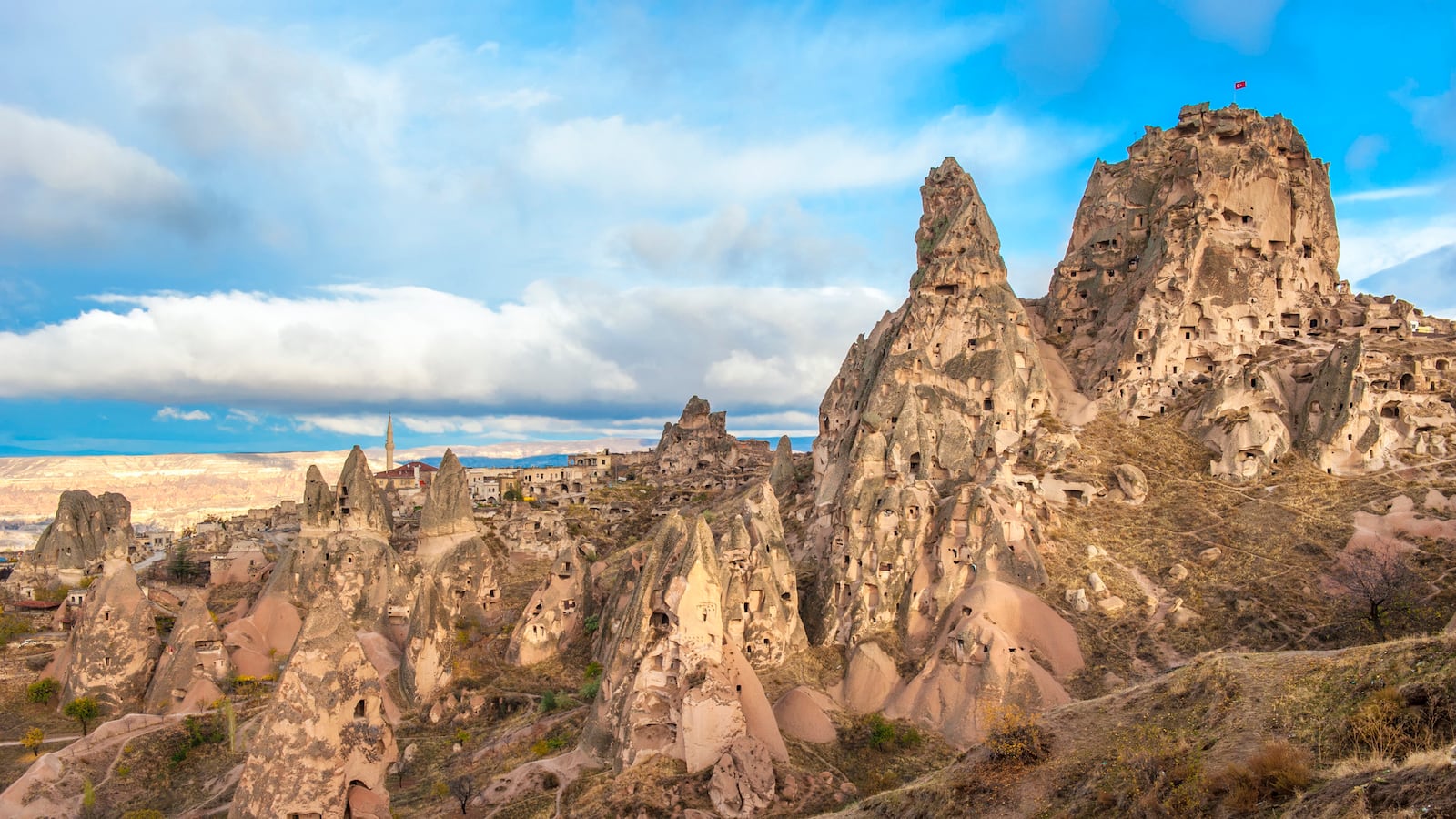In the center of Turkey, a sprawling 35,000 square-mile jungle of natural rock formations has served as a hideout for hundreds of years of civilizations.
This otherworldly region of Turkey, Cappadocia, is peppered with thousands of what the locals call “fairy chimneys”: towering formations of soft rock which began as volcanic ash that rained down on the region millions of years ago, and, after being battered by wind and water for millennia, took on the conical shapes they are today. The stark expanse of narrow, earth-toned peaks appear uninhabitable from afar. But the area is actually one of the world’s biggest cave-dwelling complexes, complete with with ancient churches, modern restaurants, and tons of history.

For centuries, people have been tunneling into the landscape, which proved especially adept at hiding those fleeing persecution. The region was first settled by the Hittites in 1800 B.C. By the fourth century A.D., the landscape’s unique features were beginning to be inhabited by hermetic communities, apparently ordered there by Basil the Great, the bishop of Caesarea. Later, Christians seeking sanctuary from the Romans, and, later still, Muslim raiders, found refuge in the rock shelters and began to connect the chimney formations with subterranean villages. When invaders did arrive, Christians are believed to have slipped down through holes in the ground and remained there until the danger passed. Within the layers of structures, both above and below ground, they had constructed churches, storehouses, homes, and passageways.
Within the Cappadocia region is the popular Göreme Valley, where evidence of these Christian communities is most visible in the elaborate and colorful frescoes that have survived inside cave walls for more than a thousand years. After the Christians departed, Muslims moved in and scratched out the eyes of many saints, leaving them with gaping holes. But the vividly painted remains are still considered by UNESCO to be one of the best examples of post-iconoclastic Byzantine art.
Another notable region is nicknamed “Pigeon Valley” for the thousands of bird nesting holes dug into the pliable rock. The pigeons served as both food and fertilizer for villages along the route, and continue to make their home in the crevasses.

A French priest rediscovered Cappadocia in 1907 and set off an influx of researchers to the area, and in the past few years, tourism to the land of fairy chimneys has boomed. While some Turkish residents still live in its peaks, a central chunk of the region’s main towns have been taken over by restaurants, guesthouses, and upscale hotels.
But the throngs of tourists trampling through the region and climbing on the delicate, rock-hewn structures has taken its toll. In 2010, preservationists found 22 painted churches that were on the verge of being extensively damaged unless methods to safeguard them were taken. Generously, the Japanese government stepped in with $1.2 million in funding to preserve the colorful frescoes, many of which have already endured more than a thousand years of wear and tear.
There’s no best way to see Cappadocia, nor would it be possible to soak in the entire sprawling expanse in one visit. A tour of the Göreme Open Air Museum is a good option to explore the most impressive churches, and many different companies offer horse rides and hiking trips around rock formations. But visitors who prefer to take in the impressive scale of the area should fly in a hot-air balloon above this almost lunar landscape. Just try to remember: you’re still on Earth.





